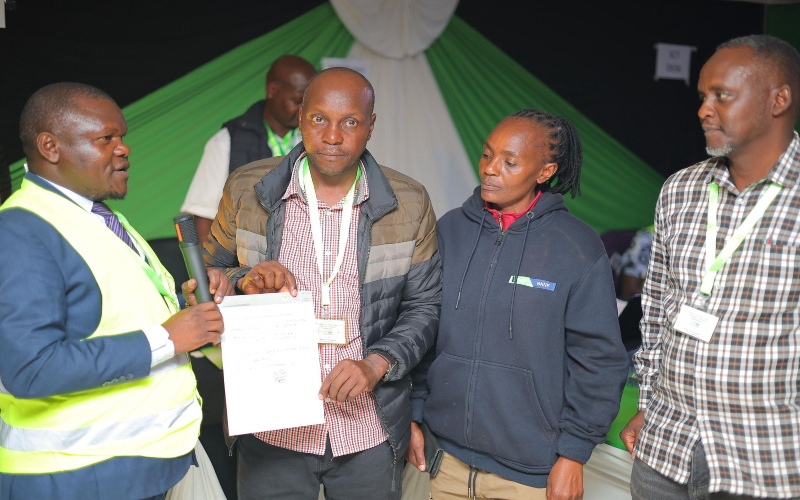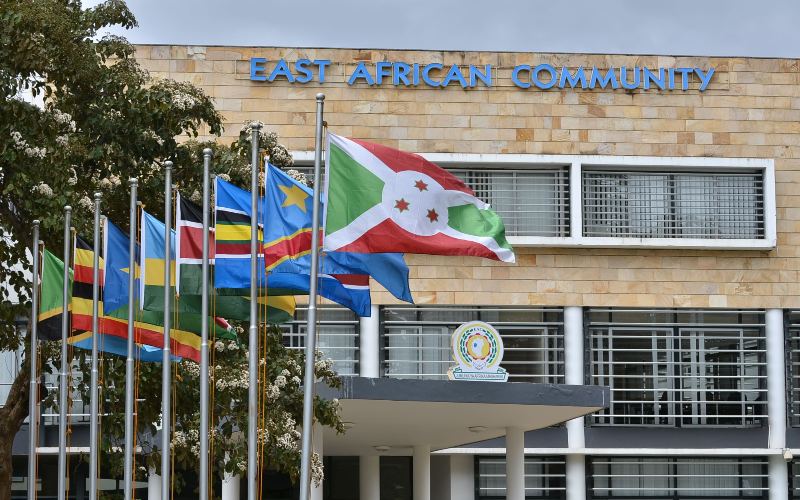Government warns religious extremism shifting to encrypted ‘digital danctuaries’

The government is now warning that religious extremism is shifting to 'digital sanctuaries' where religious groups are migrating operations to encrypted platforms such as WhatsApp and Telegram, complicating efforts to track and counter indoctrination.
This is according to the "State of National Security Report", which was tabled before Parliament last week by President William Ruto.
More To Read
- Two police officers killed in Al-Shabaab IED attack in Garissa
- Report warns of widening gap in Africa’s cyber resilience as attacks surge
- Communications Authority of Kenya takes LSK to court over controversial cybercrime law
- 868 Al-Shabaab militants killed since February - Somali Defence Ministry
- AG Dorcas Oduor moves to lift court orders blocking cybercrimes law
- Kenya and UK celebrate gains against violent extremism at Ethiopia and Somalia borders
The government has, in recent days, been pushing for ways to hold criminals who exploit app anonymity to commit crimes in the country. The report covers the period between September 2024 and August 2025.
On Tuesday, Internal Security Permanent Secretary Dr Raymond Omollo, who also doubles as the National Computer and Cybercrime Coordination Committee (NC4) Chairperson, sounded the alarm over a surge in harmful anonymity online.
Omollo said it is rapidly becoming one of the most serious barriers to accountability and justice across Africa by creating a marketplace for cybercrime where stolen personal data for identification and access is openly traded.
"As we strengthen our defences, we must confront the growing challenge of anonymity within cyberspace. Across Africa, anonymity continues to impede investigations, frustrate accountability and complicate the presentation of digital material before the courts of law," he said, without making direct reference to the crimes being perpetrated under the anonymity features.
The report further said that efforts to regulate religious groups are also facing the challenge of a slow uptake of registration by religious groups, including small "fellowships" or "religious study groups" that operate in private homes.
Others, according to the document, circumvent the law and their intentions by registering as Community-Based Organisations (CBOs), Public Benefit Organisations (PBOs), or businesses to mask their true activities.
During the period under review, mass graves were discovered in Kwa Binzaro, Kilifi County, among other incidents of religious extremism in Migori and Meru Counties.
Reviews carried out nationally by the Taskforce on the Review of the Legal and Regulatory Framework Governing Religious Organisations in Kenya, 2023, identified factors that predispose vulnerable citizens to exploitation as a lack of civic education, the erosion of national values and principles, repugnant beliefs and cultural practices, economic despair, social alienation and regulatory gaps.
"The Government remains committed to addressing the menace and has continued to collaborate with all religious stakeholders to devise sustainable strategies to regulate religious space in the country by implementing meaningful reforms and building societal resilience," the report assures.
According to the state, terror organisations, particularly Al-Shabaab and the Islamic State, continued to evolve by enhancing their networks, adopting new modus operandi, intensifying propaganda and leveraging technologies to perpetrate their heinous acts.
At the same time, Al-Shabaab's threat to Kenya was also compounded by continued radicalisation and recruitment of vulnerable youth across the country to join the terrorist group.
Security agencies have, on their part, made significant efforts in curbing attacks and reducing the general impact of violent extremism by frequently intercepting Al-Shabaab militants along the Kenya-Somalia border who had been attempting to infiltrate into the country.
To address the terrorism threat, the report adds that the government also continued to adopt strategic interventions like arresting and prosecuting terror suspects, enhancing intelligence collection and sharing, deployment of advanced surveillance systems and stepped-up disengagement, as well as de-radicalisation, rehabilitation and reintegration programs targeting violent extremists and returnees.
The report further says the state rolled out socio-economic development projects such as roads, education facilities and security camps in the affected counties to address vulnerabilities exploited by terrorists to radicalise and recruit the communities.
Despite these efforts, the report says Al-Shabaab continued to exploit the porous Kenya-Somalia border to infiltrate and launch attacks in parts of Kenya's North Eastern and Coast regions, with the most affected areas being the Arabia-Fino–Lafey–Elwak corridor within Mandera County, the El Ram–Kotulo–Khorof Harar-Wajir axis within Wajir County, the Liboi–Kulan–Amuma–Hulugho–Galmagalla–Sangailu–Ijara corridor within Garissa County; and Boni Forest Enclave especially, along Kamuthe and Digdiga within Bura East; as well as Kamuthe–Korakora–Nanighi stretch as well as the LAPSSET corridor within Lamu County.
At the same time, Al-Shabaab also sustained collection of zakat and kidnapping for ransom, as well as illegal taxation and extortion, besides receiving donations from sympathisers to facilitate its terrorist operations.
Al-Shabaab also exploited the ATMIS/AUSSOM transition that led to a reduction in troops' presence; clan dynamics and political instability in Somalia intensified attacks, with intentions to expand areas under its control.
A total of 61 terror-related incidents were reported, including 15 active shooter incidents, 20 IED attacks, and nine kidnapping incidents, affecting 119 victims.
"During the period under review, Al-Shabaab's activities were characterised by probing attacks on security agencies, critical infrastructure and security installations and emplacement of Improvised Explosive Devices (IEDs) along the main supply routes, as well as targeted killings and abductions," the report says.
Top Stories Today












































